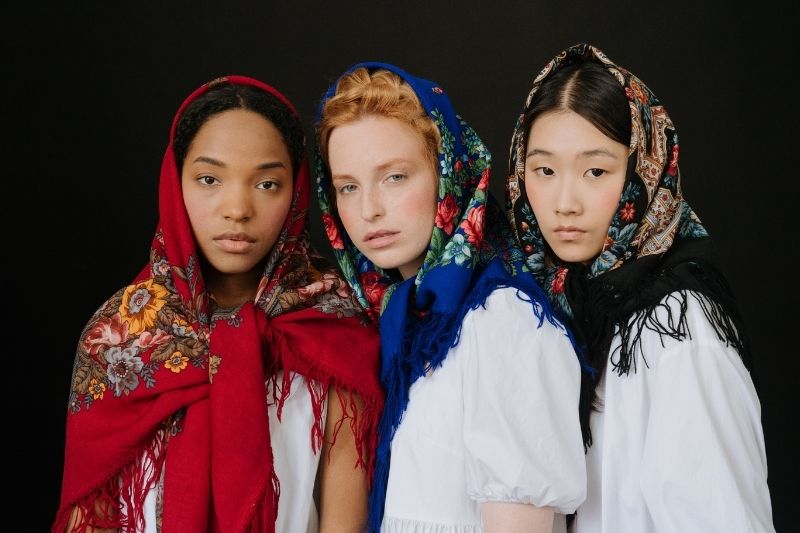No products in the cart.
Pashmina Shawls and Scarfs

Let’s talk about an exclusive art originating from the beautiful valley of Kashmir. As a symbol of elegance, luxury, and beauty, pashmina shawls and scarves have always caught the love and fancy of women around the world. Speak about royalty, talk about the Pashmina! (Image Credit: Cottonbro/Pexels)
Treasured for its traditional designs and expensive taste, the Pashmina has been around since time immemorial. And as you’d predict, the pashmina market has burst through the clouds and expanded beyond previous expectations. Curious? Here’s everything you should know about Pashmina shawls and scarfs- right from their history and production, to the ever-growing market.
What’s the History of Pashmina?
The production of the Pashmina began 400 years ago. In 1796, Abdullah Khan, the then Afghan governor of Kashmir, presented an exquisite shawl to Sayyid Yahya, a visitor from Baghdad. He, in turn, gave it to the khedive of Egypt, who was so impressed with the exotic work of art. Then, the Pashmina shawl found its way into the hands of Napoleon Bonaparte when he received it as a gift from the khedive of Egypt.
Since it reached the western world, it has never left. In fact, over time, more and more westerners became enraptured by the pashmina. So much so that it soon rose to a global fashion spectacle.
How are Pashmina Scarves Obtained?
Obtained from Kashmir in India, Pashm or Pashmina is one of the finest wool. Pashmina originates from the Persian word, ‘Pashmineh’- meaning ‘made from wool’. The fibers of this wool come from the silky fleece of changra goats, which live in altitudes as much as 4000-5000 meters high. With each goat producing about 80-100 grams of wool fiber, an average Pashmina shawl requires the annual growth of three goats.
It is important to note that the collection of hair does not harm the goats in any way. On the contrary, using age-long Nepalese means of harvesting the hair, artists sort sheared hair, selecting the very best to be weaved into scarves and shawls. Pure pashmina is usually weightless. As such, added silk provides some weight. Each spring, the goats naturally shed away the coat that developed on their skin during the winter season as a form of adaptive characteristics (molting). The manufacturing of the fabric makes the most of the goat’s cast-offs.
The production of the Pashmina fabrics has three processes- spinning, weaving, and dyeing. The result is a beautifully, adorned piece of captivating clothing.
Why Do People Love Pashmina Shawls and Scarves?
Wanna enhance your look effortlessly? Try a Pashmina shawl. As previously mentioned, Pashmina shawls and embroidery stoles are associated with elegance, beauty, and luxury. If that doesn’t catch your eye, check out these three reasons why women around the Pashmina market are exploding on the international scene.
- Considered the world’s best-refined wool, its texture is silky and soft.
- A Pashmina offers unmatched softness and warmth! Thinking of something softer than cotton or silk? Try out Pashmina. With these shawls, you do not just appear adorned, but your body benefits from a cozy warmth.
- It is extremely light to carry. You wouldn’t mind carrying it, would you? This lightweight fabric can be carried around all day without you even feeling it, while it keeps giving you warmth- all day long.
Conclusion
Whether you are a college student or a businesswoman, Pashmina shawl and embroidery stoles shouldn’t be excluded from your wardrobe. Being one of the most fashionable winter wears, every woman, regardless of her age group, deserves a Pashmina shawl and scarf!
















Leave a Reply